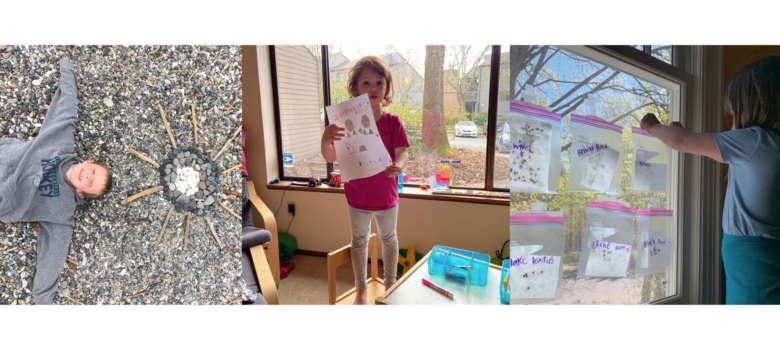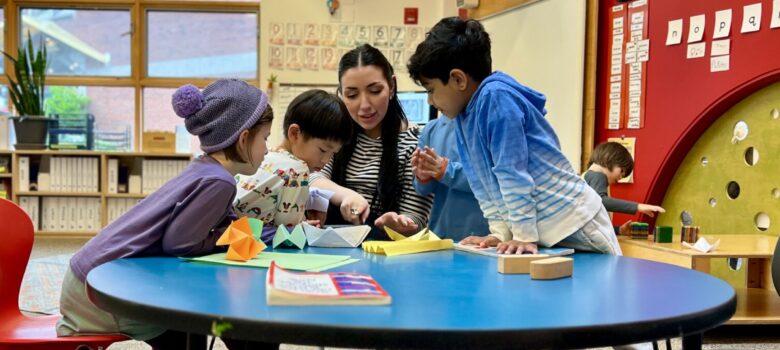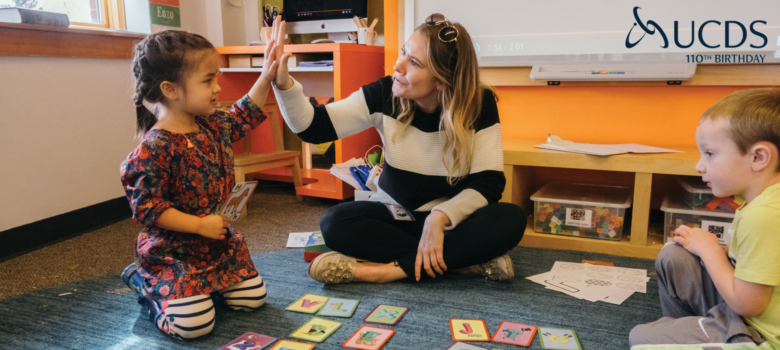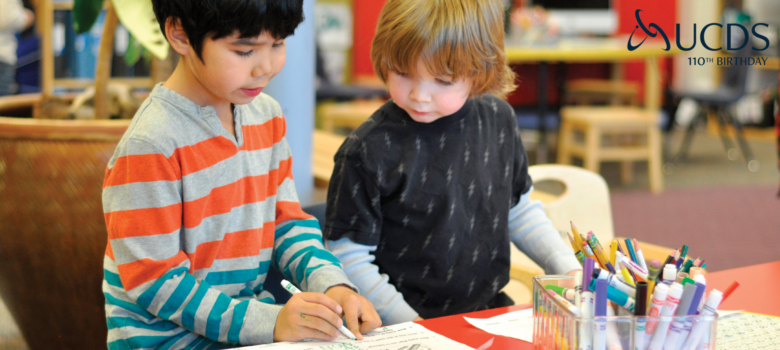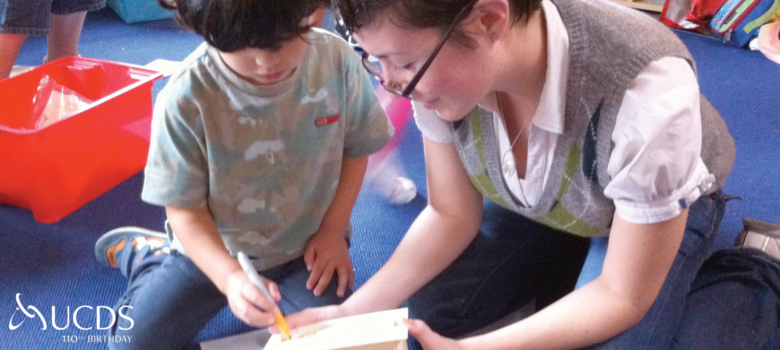By Marianne Sardelich, Infant Toddler Program Curriculum Coordinator
In my first blog post I wrote about my thoughts for educators who are leading Zoom meetings with young children. In this post I’m going to offer a couple of insights that I have for parents who are helping their children during Zoom meetings.
As a parent and teacher, I’ve been on both sides of the Zoom screen, facilitating small group meetings and also helping both my young children during their classroom meetings. So I would like to start by expressing my gratitude.
It goes without saying that the true heroes of distance learning are the parents and guardians who are helping their children during this time at home. You’ve been thrust into a role that you probably never planned on attempting and with almost no warning or time to prepare. You’ve become your child’s teacher, classmate, and best friend. In some circumstances, you might be your child’s only play partner and you might be finding that job just as demanding as the one you actually get paid for. I would like to echo what is already being said, which is that whatever you are doing, it’s the right thing. There is no “right” way to go about teaching in the classroom and there is no “right” way to go about teaching at home. Hopefully you’ve settled into a routine, you’ve found some resources that help to break up the day and are entertaining for both you and your children, and I hope that you are also finding time for yourself.
Thank you for becoming the co-teacher! When our teachers and staff began this journey into Zoom, we wondered if meetings might be a time when parents could take a break. We’ve found, though, that for our age group it is tricky for children to manage interfacing and participating through a screen without onsite support. So on top of all the other jobs you are juggling, you have also become my co-teachers and I appreciate all of the support that you are giving me and your child. You’re setting up materials, creating workspaces, interpreting my questions, reminding your child of classroom procedures like raising hands or waiting for a turn, helping me to see who is ready to share, and who needs extra time or support. By being there with your child, you are making our lesson plans more meaningful and helping your child to feel the same support that they feel when they are at school.
Speaking for myself, when I am in the co-teacher role as a parent, one of the things that I feel pressured to do is make my children participate. This was especially true when we first began attending Zoom meetings and my children were still making sense of the new way of doing things. My three year old was very self conscious about being seen on screen and would often refuse to come over to the computer. While my one year often just wandered away as one year olds are prone to do. As a teacher, I noticed this happening with other students as well. Knowing that young children sometimes need to experience the same thing many times before they are ready to participate, I stopped myself from trying to force participation and began to just leave the meetings on. And this is what I would advise all parents of children who are struggling with Zoom meetings: Leave us on even if your child doesn’t seem interested. To help engage my children, I began reasking teacher questions, calling out activities that I knew would pique their interest, and talking through what I saw on the screen. I know that it is not always possible to be part of all of your children’s meetings or to be fully available during them. There are about a thousand other things that need to get done! If you aren’t able to be part of the meeting, it is developmentally appropriate for your child to not be very interested in what is happening on the screen. One, two, and three year olds seek out human interaction to learn and the screen (unfortunately) does kind of a poor job providing that. They might wander away or go to play somewhere else but I would urge you to still leave the meeting on. I think what really helped my own children and most of the students who have steadily attended Zoom meetings is getting the chance to build their knowledge of Zoom. They are building working memories of how Zoom works and what meetings will look like. Children are getting used to seeing themselves on screen and to interacting with teachers and materials. Each week, they become more comfortable engaging and they are beginning to experiment with how they can use this new format. I think parents might feel that it is distracting to keep a meeting on if their child is doing something else or otherwise not participating. I would like to assure any parents or guardians who feel this way that we teachers are used to it! During a regular school day, children often choose not to participate in a project, meeting, or activity we are offering but it still happens and they often either decide to join later or process the information by listening to other people talk about it. So even if it doesn’t seem like they are interested, just leave us on and see what happens. Maybe we’ll find something that will hook your child and we can use it again at the next meeting. Maybe they will get used to the interface and seeing themselves on camera and it won’t feel so different. Maybe the lure of interacting with their friends will become so great that they won’t be able to resist it. In any case, leaving us on gives them the chance to come back whenever they want to and helps us as teachers to still feel like we are part of their learning experience.
As a result of leading Zoom meetings, I’ve learned that it is possible to create meaningful learning experiences online. Curriculum that embraces children’s interests, allows children time to connect with one another through games, conversations, and activities, and also introduces new skills and areas of study will help children to still feel part of their school community and to evolve as learners. I am looking forward to getting back to the classroom but teaching on Zoom has helped me to reconnect with some of my beliefs about teaching like the importance of embracing challenges, finding creative solutions, keeping relationships at the heart of curriculum, trying to be flexible and adaptive, and not being afraid to change my plans completely. This experience has reminded me that just like my students I still have so much to learn.

